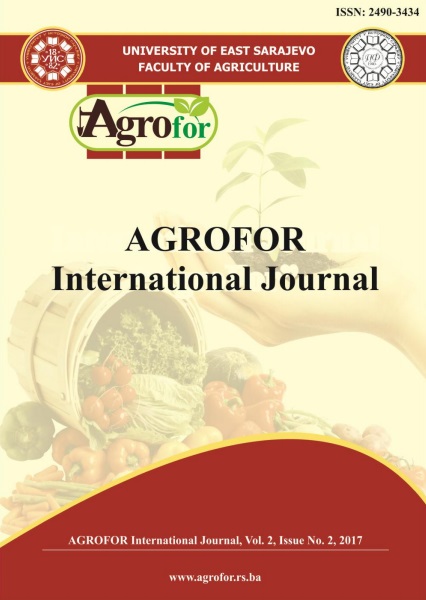DIFFERENCE IN CUTICLE COMPONENT AND IMMUNOCOMPETENCE IN NURSE AND FORAGER WORKER HONEYBEE (APIS MELLIFERA L)
DOI:
https://doi.org/10.7251/AGRENG1702047BAbstract
The aim of this work is to study the difference of physiology between the worker
bee nurse and forager (Apis mellifera intermissa). The chosen physiological
characteristics were the component of the cuticle (protein-chitin content) and the
measure of the efficiency of immune system (the total number of haemocytes
(THC), the normal haemocytes and the relative mass of fat body). The THC is
widely used as an indicator of cellular immunocompetence of insects. The normal
haemocytes, also referred to immunocytes, indicate the integrity of cellular
immune system. The fat body is an indirect measurement of induced humoral
immunocompetence. The THC and the normal haemocytes were determined by the
method described by Amdam et al., (2004). For the estimation of the cuticular
abdominal protein-chitin content, the method described by Berghiche et al., (2007)
was employed. The relative mass of fat body was determined using an ether
extraction method according to Doums et al., (2002) and Wilson-Rich et al.,
(2008).
The results show that a considerable percentage of a cuticular protein and a
decrease of chitin was observed in nurse compared to forager. The older bees
exhibited a strong reduction in the immun parameters.

